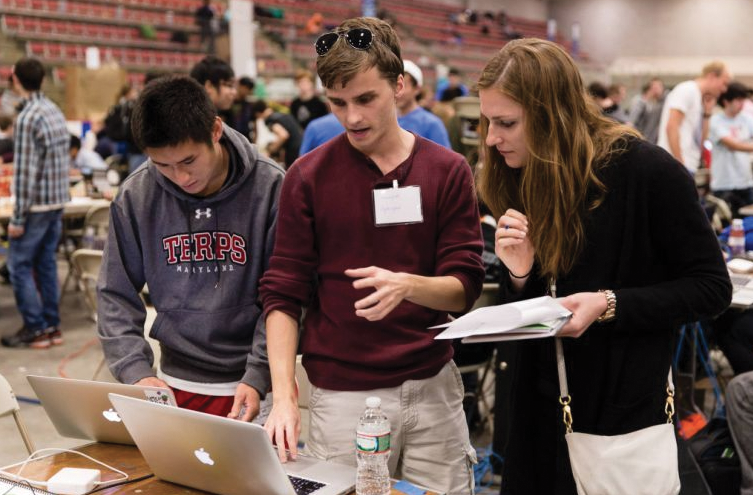Thirty hours, more than 1,000 hackers and over $10,000 in prizes—this was HackMIT. Hosted by the Massachusetts Institute of Technology (MIT) in the picturesque town of Cambridge, Massachusetts, HackMIT brought programmers from every level to participate in a ‘hack-a-thon.’ The purpose of the event was to create a product or a service from scratch in a fixed amount of time with a team of up to four ‘hackers’. All hacks were required to be computer-related, but the projects ranged from web, desktop, mobile, and hardware tasks, such as websites and iOS apps.
The event was sponsored by Sequoia Capital, a large American venture capital firm known for being an early backer of Google. After a brief introduction followed by crisp descriptions of various Application Programming Interfaces (APIs), the event kicked off with teams rushing out of the auditorium to find themselves a cozy and comfortable spot that would be their home for the next 30 hours.
Forty-five students represented McGill at this event, all of whom were members of the emerging group aptly named HackMcGill. These devoted members—who traveled all night to make it to the Hack-a-thon the following morning—were eager to take advantage of the exciting opportunities offered by the event.
Teammate Ivo Bratanov said “HackMIT was an incredible opportunity to meet, interact with, and learn from some of the brightest coders in North America.”
Representatives from the big names in the social media world, like Twitter, Facebook, and Google were present to discuss their APIs with students. This opportunity allowed hackers to network with people in the industry, while at the same time acquire some sample ‘swag’ as souvenirs. Technical talks were also conducted throughout the day by these companies, which gave the hackers an opportunity to take a break and get some air.
 As the hack-a-thon progressed, the hackers lost Wi-Fi connectivity because of the heavy pressure the event put on the network. This led to frustration across the event. Within a few hours the organizers brought Ethernet cables and hooked all the groups up to Internet. The venue quickly took the shape of a tropical forest floor littered with vines.
As the hack-a-thon progressed, the hackers lost Wi-Fi connectivity because of the heavy pressure the event put on the network. This led to frustration across the event. Within a few hours the organizers brought Ethernet cables and hooked all the groups up to Internet. The venue quickly took the shape of a tropical forest floor littered with vines.
Despite these technical difficulties, the true spirit of the hack-a-thon kicked in as the day progressed. The cables, laptops, pages on pages of product designs and discussions, and energy drinks—the key to a 30-hour hackathon—all contributed to the lively atmosphere.
As the evening drew near, the organizers provided air mattresses for those looking to take a little break. However, most hackers stuck it out through the night to come up with brilliant hacks that were displayed the next morning in the judging session. The judging period was immediately followed up with the closing ceremony at the Kresge Auditorium where the winning hacks were announced.
Though HackMcGill did not return with a prize, hackers returned with new friendships, memories, and a renewed spirit for hacking.










well done bud!